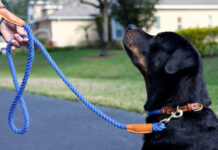A dog attack can be a terrifying event and can leave psychological scars long afterward.
If a dog has bitten you, you need to act fast to get the right medical treatment. A dog bite injury can quickly turn to infection and cause life-threatening conditions for which you might have to consult Milwaukee dog bite injury lawyer.
Please read our guide on the best steps to take to treat a dog bite wound and how to seek medical and legal advice.
Identify the Wound
There are different types of wounds you can get from a dog’s bite. The first is a superficial wound, which is like a scrape or a graze. The skin is not broken, and the bleeding will be very light.
If the dog’s teeth have entered the skin, then this is called a puncture wound. Puncture wounds will bleed quite a lot.
They are more dangerous because a dog’s mouth can contain many infections, and these transfer to the wound when it bites you.
To begin with, it is best to let them bleed for a short time. However, only if the blood flow is not too heavy or the wound is not near the head or neck.
Bleeding will help remove some of the infection naturally. Don’t do this for more than five minutes. The bleeding should stop naturally with gentle pressure.
Wash the Wound
If the wound is superficial, cleanse it with water or with an antibiotic wipe. Remove any dirt or foreign objects from around the wound site.
If the bleeding has not stopped under gentle pressure with a puncture wound, you need to immediately seek emergency treatment.
If the bleeding has come to a natural stop, then you can clean the wound site under gentle, warm running water. Use a mild soap to help clean the wound, being very careful not to restart the bleeding.
Apply Antibiotic Creams
If you have an over the counter antibiotic cream, you should apply this to a wound immediately. You may also want to take a mild painkiller to help with any discomfort.
Do not use any rubbing alcohols on a puncture wound, as this will delay the natural healing process.
Bandage the Wound
Superficial wounds can be lightly bandaged to keep them protected and clean. If the wound is small enough, a sticking plaster will do, or you can wrap it in a sterile bandage.
Puncture wounds do not normally require a bandage as they clot naturally. However, you can apply a light bandage over the site if you feel it necessary.
Ensure the wound site is clean of any debris or anything that could dislodge the clot before you do so. Be careful to keep the wound protected from any accidental knocks or bangs.
Seek Medical Help
Once you have ensured that the wound is clean and the bleeding has stopped, it is time to go and get medical help.
A medical professional will need to assess the size and damage done by the wound. They will examine the wound, clean and bandage it further for your protection and comfort.
Before they bandage the wound permanently, you may want to photo-document the injury for insurance purposes.
They may give you a course of antibiotics to take for a week or more. You must complete the course to ensure that you are fully protected from any infections.
You will need to regularly replace bandages at home to keep the wound clean and free from infection. The doctor will provide you with the supplies needed to do this.
Check Your Vaccinations
The doctor will likely ask you about your vaccination status, especially when it comes to rabies and tetanus. They may give you a booster shot while treating you if you are not up to date.
Try to remember the incident with the dog. If the animal was unknown to you and possibly wild, then you need to be concerned about rabies. Was the dog behaving strangely? Was it partially paralyzed or excessively violent?
These are common symptoms of a dog suffering from rabies. Contact animal control or 911 so that they can attempt to capture the animal. Do not try and capture the animal yourself.
Document the Incident
In the heat of the moment, it may be difficult to remember all the incident details. But it is important to try and photograph and write down as much as you can remember.
The doctor, the police/animal control, and your legal team will want to know as much as possible about what happened.
Try to remember:
- Where did it happen?
- What happened before the bite?
- Do you know the dog or the owner?
- What breed/color was the dog?
- Was the dog showing any signs of disease?
Once you’ve documented these answers, it’s smart to research helpful information on personal injuries to learn more about your next steps.
This information will be essential in compiling an incident report, which could build a case against negligent dog owners. It will be beneficial information for a dog bite personal injury claim as well.
What to Do If Your Dog Bites You?
What happens if the dog that bites you is your own? It depends on the situation. If the dog is a puppy, then you need to consider training.
It is unlikely that a puppy bite will cause too much harm, but bad habits must be reformed at an early age. Puppies must learn that signs of aggression and nipping are not acceptable behavior.
If your dog is an adult dog and the bite is extremely out of character, then you may want to see a vet. It is likely the dog is biting due to an unseen pain that is causing them extreme discomfort.
Make sure your dog’s rabies shots are kept up to date. If you suspect your dog has contracted rabies, then you must inform your vet or animal control immediately.
Treat a Dog Bite Injury Quickly
Don’t wait to seek treatment even if the dog bite injury seems minor. The greatest risk from a dog bite is the onset of an infection. The sooner you clean the wound and seek medical assistance, the better.
If you enjoyed this article, please check out our blog for more like it.
Read Also : 6 Tips for Feeding Your Dogs While on a Road Trip



































































